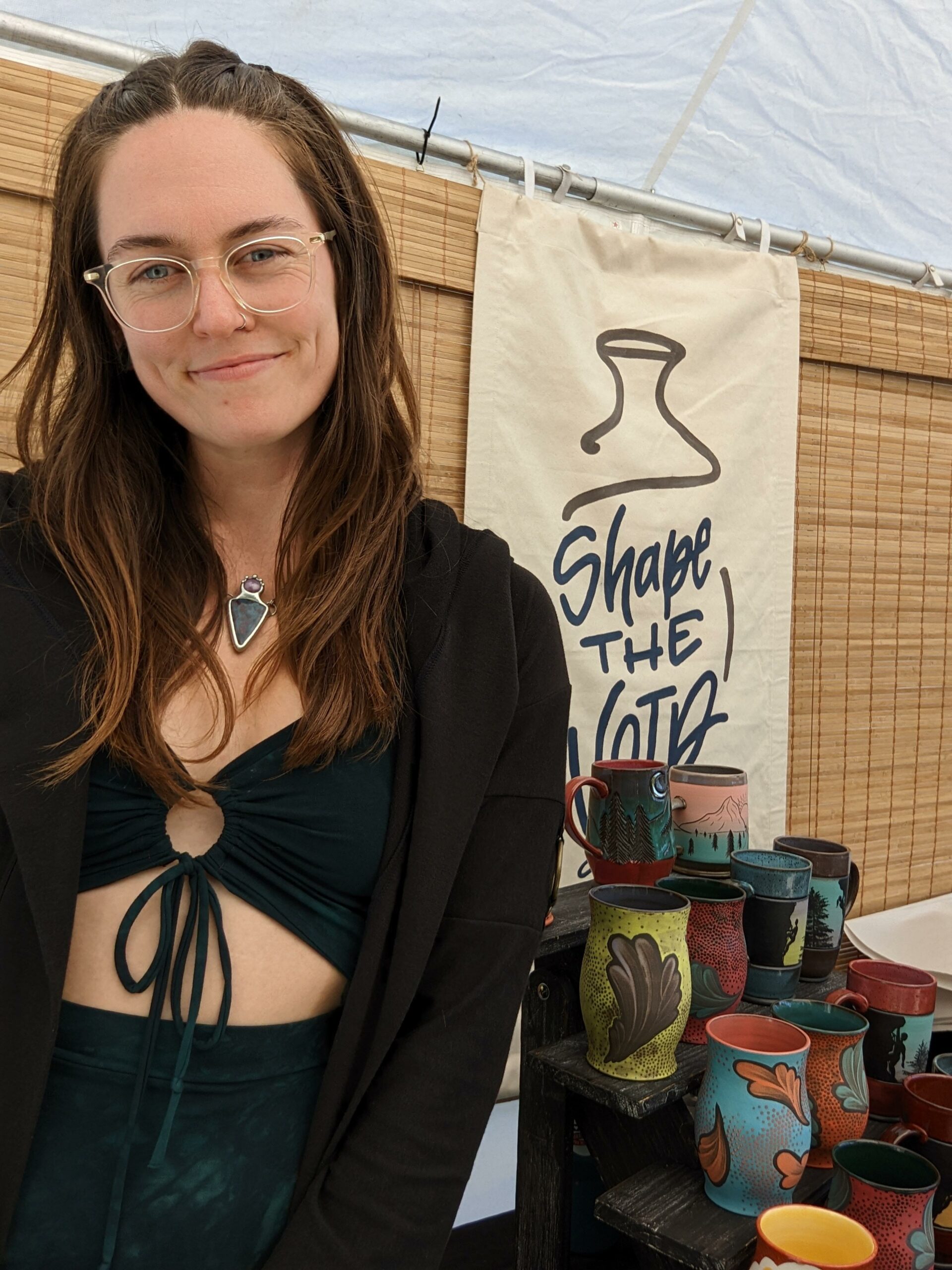Can you tell us a little bit about yourself?
I sure can! I was born and raised in Columbus Ohio and I am passionate about traveling and the outdoors. I am an avid climber/slackliner/highliner and I adventure out of Ohio to do all of these things as much as I can. I’ve structured my life around these passions and I hope that in the future I can tie my practice of ceramics into it all. I have 3 fur babies; a dachshund named Norman, a shepherd/husky mix named Leela, and a cat named Cricket. I have been practicing ceramics for 16 years and have been working professionally in the field for 12. I’ve worked in paint your own pottery studios, community studios, and for the largest chunk of my professional career I was employed by Mayco! I absolutely LOVE to teach and am looking forward to the opportunities that present themselves as I to continue to develop my practice as an instructor.
What drew you towards working with ceramics?
I really admire the dynamic nature of the process and materials. I love juggling a variety of tasks and developing an understanding of the materials that I am working with. I love the community and the opportunities to travel that are presented through both learning and teaching ceramics!
How do Mayco glazes and products fit into your work? Why do you like working with Stroke & Coat at midrange for your designs?
I know Mayco glazes like the back of my hand is the primary reason they fit into my work so well. I’ve spent years at Mayco doing product testing and it has really helped me develop a vast understanding of their products. I absolutely love Stroke & Coat because they are such versatile and reliable glazes that work very well on almost any clay you can use it on. I used to use Underglazes for my background gradients, but when I began using Stroke & Coat it added an additional depth and vibrancy to my work that was missing when I was only using underglaze.
We noticed you like to incorporate nature settings like mountains and trees into your designs. Can you tell us where this design inspiration comes from?
My heart is in the mountains for sure! Ever since my first ever road trip out west to Yellowstone, I’ve been enamored with the landscapes that you see when you’re out there. I mentioned previously that I am a frequent climber/highliner; these things require cliffs so the places that I get to go to do these things influence my work a lot.
Does Norman help create any of your pieces?
I like to say Norman is my supervisor!
How has it been creating your pieces full time now?
I absolutely love it. The road can get bumpy sometimes, but those are just opportunities to problem solve and usually if I am patient enough everything works out even better than I had hoped. Since I’ve gone full time, my work has developed A LOT and that is something that is very satisfying to witness. The progress that I’ve made in the last 6 months has built a lot of enthusiasm for what is to come in the future!
How did you come up with the name “Shape the Void Studios”?
So it is actually a reference to a text that I had to analyze in my philosophy class in college. I am in no way a philosophy buff, but this part stood out to me, perhaps because it is literally talking about pottery or because it was the one text that I was assigned to write about. Either way I feel that it has a lot of depth and can be something that relates to a variety of experiences in life, not only ceramics.
Martin Heidegger “The Thing”
“But if the holding is done by the jug’s void, then the potter who forms sides and bottom on his wheel does not, strictly speaking, make the jug. He only shapes the clay. No—he shapes the void. For it, in it, and out of it, he forms the clay into the form. From start to finish the potter takes hold of the impalpable void and brings it forth as the container in the shape of a containing vessel. The jug’s void determines all the handling in the process of making the vessel. The vessel’s thingness does not lie at all in the material of which it consists, but in the void that holds.”
